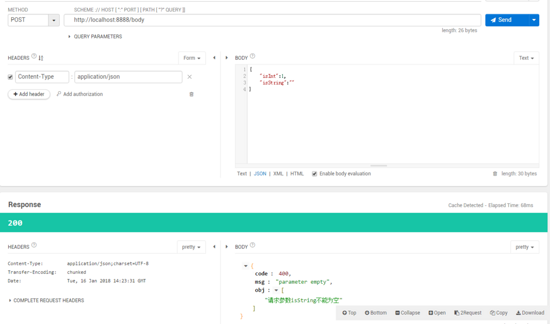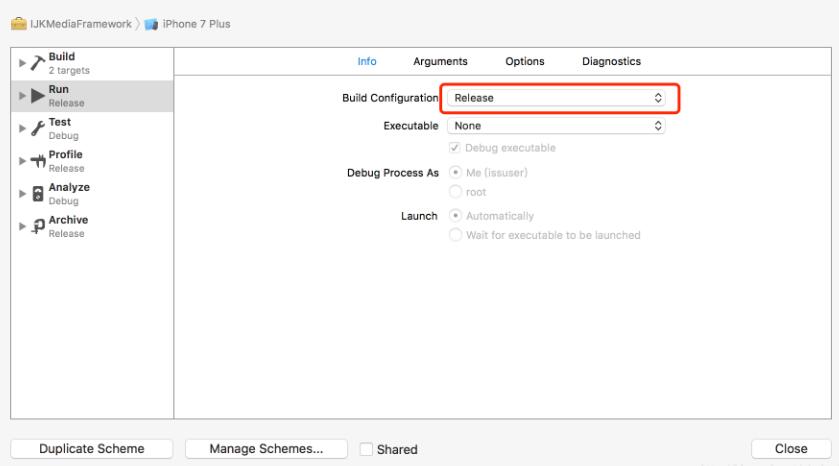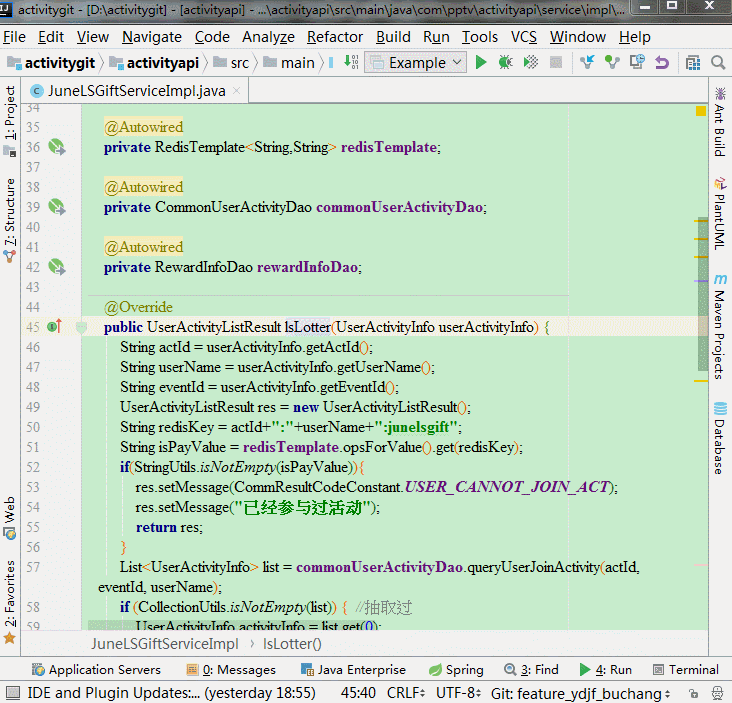why:
为什么要用aop实现校验?
answer:
spring mvc 默认自带的校验机制 @valid + bindingresult, 但这种默认实现都得在controller方法的中去接收bindingresult,从而进行校验.
eg:
|
1
2
3
4
5
6
7
|
if (result.haserrors()) {
list<objecterror> allerrors = result.getallerrors();
list<string> errorlists = new arraylist<>();
for (objecterror objecterror : allerrors) {
errorlists.add(objecterror.getdefaultmessage());
}
}
|
获取errorlists。这样实现的话,每个需要校验的方法都得重复调用,即使封装也是。
可能上面那么说还不能表明spring 的@valid + bindingresult实现,我先举个“栗子”。
1. 栗子(旧版本)
1.1 接口层(idal)
eg: 简单的post请求,@requestbody接收请求数据,@valid + bindingresult进行校验
- httpmethid: post
- parameters:@requestbody接收请求数据
- valid:@valid +bindingresult
|
1
2
3
4
5
6
7
8
9
10
11
12
13
14
|
@responsebody
@postmapping("body")
public responsevo bodypost(@requestbody @valid testvo body,bindingresult result){
//校验到错误
if (result.haserrors()) {
list<objecterror> allerrors = result.getallerrors();
list<string> lists = new arraylist<>();
for (objecterror objecterror : allerrors) {
lists.add(objecterror.getdefaultmessage());
}
return new responsevo(httpstatus.bad_request.value(), "parameter empty", lists);
}
return new responsevo(httpstatus.ok.value(), "bodypost", null);
}
|
1.2 实体(vo)校验内容
@valid + bindingresult的校验注解一大堆,网上一摸就有的!
|
1
2
3
4
5
6
7
8
9
10
|
public class testvo {
@getter
@setter
@min(value = 0,message = "请求参数isstring不能小于0")
private integer isint;
@getter
@setter
@notblank(message = "请求参数isstring不能为空")
private string isstring;
}
|
1.3 结果测试
2. aop校验(升级版)
可以看到若是多个像bodypost一样都需要对body进行校验的话,那么有一坨代码就必须不断复现,即使改为父类可复用方法,也得去调用。所以左思右想还是觉得不优雅。所以有了aop进行切面校验。
2.1 接口层(idal)
是的!你没看错,上面那一坨代码没了,也不需要调用父类的的共用方法。就单单一个注解就完事了:@paramvalid
|
1
2
3
4
5
6
|
@paramvalid
@responsebody
@postmapping("body")
public responsevo bodypost(@requestbody @valid testvo body,bindingresult result){
return new responsevo("bodypost", null);
}
|
2.2 自定义注解(annotation)
这个注解也是简简单单的用于方法的注解。
|
1
2
3
|
@target(elementtype.method)
@retention(retentionpolicy.runtime)
public @interface paramvalid {}
|
2.3 重点!切面实现(aspect)
切面详解:
@before: 使用注解方式@annotation(xx),凡是使用到所需切的注解(@paramvalid),都会调用该方法
joinpoint: 通过joinpoint获取方法的参数,以此获取bindingresult所校验到的内容
迁移校验封装: 将原先那一坨校验迁移到aspect中:validrequestparams
响应校验结果:
- 通过requestcontextholder获取response
- 获取响应outputstream
- 将bindingresult封装响应
|
1
2
3
4
5
6
7
8
9
10
11
12
13
14
15
16
17
18
19
20
21
22
23
24
25
26
27
28
29
30
31
32
33
34
35
36
37
38
39
40
41
42
43
44
45
46
47
48
49
50
51
52
53
54
55
56
57
58
|
@aspect
@component
public class paramvalidaspect {
private static final logger log = loggerfactory.getlogger(paramvalidaspect.class);
@before("@annotation(paramvalid)")
public void paramvalid(joinpoint point, paramvalid paramvalid) {
object[] paramobj = point.getargs();
if (paramobj.length > 0) {
if (paramobj[1] instanceof bindingresult) {
bindingresult result = (bindingresult) paramobj[1];
responsevo errormap = this.validrequestparams(result);
if (errormap != null) {
servletrequestattributes res = (servletrequestattributes) requestcontextholder.getrequestattributes();
httpservletresponse response = res.getresponse();
response.setcharacterencoding("utf-8");
response.setcontenttype(mediatype.application_json_utf8_value);
response.setstatus(httpstatus.bad_request.value());
outputstream output = null;
try {
output = response.getoutputstream();
errormap.setcode(null);
string error = new gson().tojson(errormap);
log.info("aop 检测到参数不规范" + error);
output.write(error.getbytes("utf-8"));
} catch (ioexception e) {
log.error(e.getmessage());
} finally {
try {
if (output != null) {
output.close();
}
} catch (ioexception e) {
log.error(e.getmessage());
}
}
}
}
}
}
/**
* 校验
*/
private responsevo validrequestparams(bindingresult result) {
if (result.haserrors()) {
list<objecterror> allerrors = result.getallerrors();
list<string> lists = new arraylist<>();
for (objecterror objecterror : allerrors) {
lists.add(objecterror.getdefaultmessage());
}
return new responsevo(httpstatus.bad_request.value(), "parameter empty", lists);
}
return null;
}
}
|
2.4 测试结果
看了上面两种结果,就可以对比出使用spring aop 配合@valid + bindingresult进行校验的优点:
- 去除代码冗余
- aop异步处理
- 优化代码实现
以上就是本文的全部内容,希望对大家的学习有所帮助,也希望大家多多支持快网idc。
原文链接:https://juejin.im/post/5a5e1159518825732b19d8ce
相关文章
- 64M VPS建站:能否支持高流量网站运行? 2025-06-10
- 64M VPS建站:怎样选择合适的域名和SSL证书? 2025-06-10
- 64M VPS建站:怎样优化以提高网站加载速度? 2025-06-10
- 64M VPS建站:是否适合初学者操作和管理? 2025-06-10
- ASP.NET自助建站系统中的用户注册和登录功能定制方法 2025-06-10
- 2025-07-10 怎样使用阿里云的安全工具进行服务器漏洞扫描和修复?
- 2025-07-10 怎样使用命令行工具优化Linux云服务器的Ping性能?
- 2025-07-10 怎样使用Xshell连接华为云服务器,实现高效远程管理?
- 2025-07-10 怎样利用云服务器D盘搭建稳定、高效的网站托管环境?
- 2025-07-10 怎样使用阿里云的安全组功能来增强服务器防火墙的安全性?
快网idc优惠网
QQ交流群
-
2025-05-29 82
-
2025-05-27 41
-
2025-05-29 118
-
2025-05-29 109
-
2025-06-04 36












